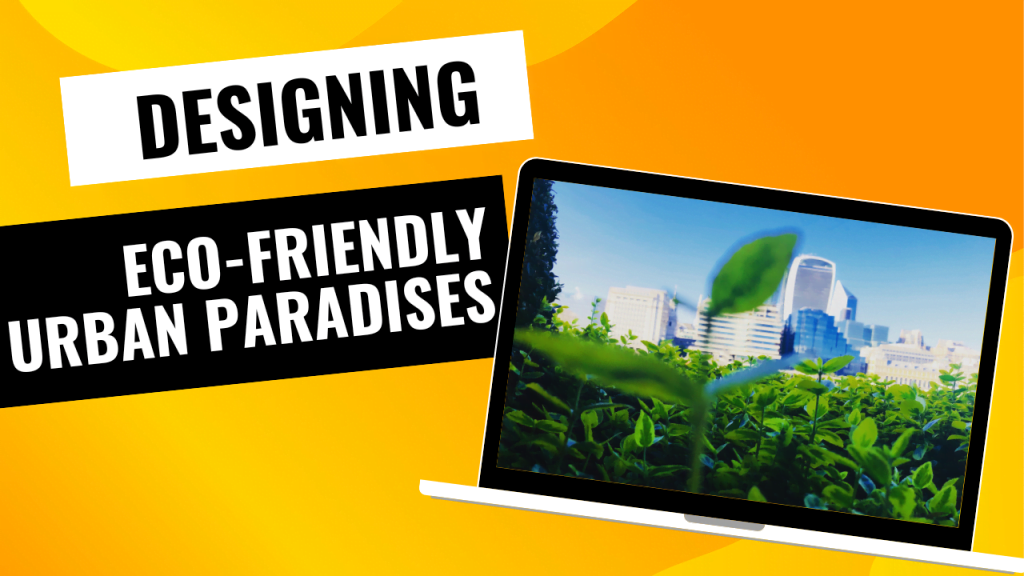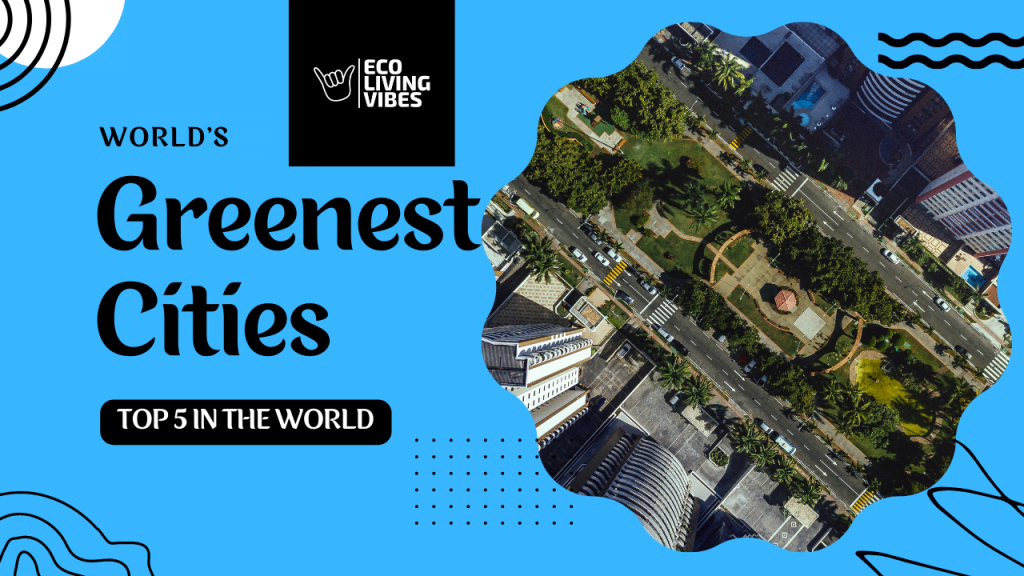The importance of sustainable city design
Sustainable city design is transforming the way we envision urban life, fostering a greener, healthier, and more enjoyable environment for all. As our world grapples with the impacts of climate change and rapid urbanisation, the importance of integrating sustainability into city planning has never been more apparent. In this article, we will explore the 12 key principles that are shaping the cities of tomorrow, guiding us towards a brighter, more sustainable urban living situation.

Principle 1: Compact and Mixed-Use Development
Embracing compact and mixed-use development is a cornerstone of sustainable city design. Dense urban development offers numerous benefits, such as reduced land consumption, decreased urban sprawl, and lower greenhouse gas emissions. By concentrating housing, workspaces, and recreational areas, people can enjoy shorter commutes and more efficient use of public transportation, leading to reduced traffic congestion and air pollution.
Fostering diverse land uses is also essential in creating vibrant, dynamic neighbourhoods. Mixed-use developments promote social interaction, increase walkability, and support local businesses. Obviously offering a variety of services and amenities within close proximity is key. One example of a successful mixed-use development is the Pearl District in Portland, Oregon: They transformed a former industrial area into a thriving, walkable neighbourhood with residential, commercial, and recreational spaces seamlessly integrated. This principle is a powerful tool in shaping sustainable and lively urban communities.
Principle 2: Green and Energy-Efficient Buildings
Green and energy-efficient buildings play a pivotal role in sustainable city design. By adopting innovative construction techniques, materials, and technologies, we can significantly reduce the environmental footprint of our urban spaces. Green buildings not only minimise energy consumption but also enhance indoor air quality and promote overall well being.
Some key elements of green building design include: Incorporating natural lighting, optimising ventilation, and utilising eco-friendly materials. Technologies such as solar panels, green roofs, and rainwater harvesting systems also contribute to energy efficiency and resource conservation. A shining example of a green building is: Bullitt Center in Seattle, which functions as a “living building” that generates its own energy, collects rainwater, and processes its wastewater. As we strive to create more sustainable cities, green and energy-efficient buildings will undoubtedly be at the forefront of this transformation.
Principle 3: Sustainable Transportation
Developing sustainable transportation systems is a key ingredient for creating eco-friendly cities. By encouraging public transportation and investing in efficient, low-emission buses, trains, and trams, cities can significantly reduce their carbon footprint and improve air quality. Furthermore, promoting cycling and walking infrastructure, such as bike lanes and pedestrian-friendly streets, helps to create healthier, more active communities.
Integrating new mobility solutions, like electric vehicles (EVs) and bike-sharing programs, can also contribute to more sustainable urban transportation. These options not only reduce emissions but also ease traffic congestion, leading to a more pleasant urban experience. Cities like Copenhagen and Amsterdam have already made significant strides in promoting sustainable transportation, with extensive bike lane networks and impressive public transit systems. By prioritising sustainable transportation, cities can take meaningful steps towards a cleaner, greener, and more accessible future.
Principle 4: Renewable Energy Integration
Integrating renewable energy sources into urban environments is essential for sustainable city design. Harnessing solar, wind, and other renewable resources not only reduces greenhouse gas emissions but also contributes to energy independence and resilience. By implementing city-wide renewable energy policies and promoting small-scale renewable installations, cities can actively transition towards a greener future.
Microgrids and smart grids play a crucial role in managing renewable energy production and distribution. Because they allow for a more efficient and reliable power supply. Innovative solutions such as: solar-powered streetlights and electric vehicle charging stations further demonstrate the potential for renewable energy integration in urban settings. Cities such as: Reykjavik, Iceland, and Masdar City, UAE, have already made significant progress in adopting renewable energy, showcasing the possibilities for creating more sustainable, carbon-neutral urban environments.
Principle 5: Water Management and Conservation
Effective water management and conservation practices are vital components of sustainable city design. By implementing efficient water infrastructure, cities can minimise water waste, reduce energy consumption, and protect valuable water resources. Of Course green infrastructure, such as permeable pavements, bioswales, and rain gardens, helps manage stormwater runoff. This reduces the risk of flooding and improving water quality.
Water recycling and reuse strategies, like greywater systems and rainwater harvesting, further contribute to urban water conservation efforts. These practices not only reduce demand on freshwater sources but also lessen the strain on wastewater treatment facilities. Cities like Singapore and Melbourne have made significant strides in water management and conservation. Obviously they are setting a high standard for sustainable urban water use. By prioritising water management and conservation, cities can ensure a reliable, sustainable water supply for current and future generations.
Principle 6: Waste Reduction and Recycling
Adopting waste reduction and recycling strategies is essential for creating sustainable cities. Implementing circular economy principles, where resources are reused and waste is minimised, promotes a more efficient and eco-friendly urban environment. Encouraging zero-waste initiatives, such as banning single-use plastics and providing recycling facilities, can significantly reduce the amount of waste generated in cities.
Sustainable waste management practices, like composting organic waste and converting waste into energy, further contribute to waste reduction efforts. Cities like: San Francisco and Ljubljana have made remarkable progress in waste reduction and recycling, setting ambitious targets and investing in waste management infrastructure. By prioritising waste reduction and recycling, cities can lessen their environmental impact and contribute to a more sustainable future.
Principle 7: Green Spaces and Urban Biodiversity
Green spaces and urban biodiversity play a crucial role in sustainable city design. Parks, gardens, and green corridors improve air quality. Likewise, they reduce urban heat island effects but also enhance mental and physical well-being. Green roofs and vertical gardens offer innovative solutions for integrating greenery into densely populated areas, benefiting both people and wildlife.
Enhancing urban ecosystems by planting native species and creating habitat corridors contributes to urban biodiversity, supporting a healthier, more resilient environment. Cities like: Singapore and Vancouver have successfully incorporated green spaces and urban biodiversity into their planning, demonstrating the potential for greener, more livable cities.
Principle 8: Social Equity and Inclusivity
Social equity and inclusivity are essential aspects of sustainable city design. By implementing affordable housing strategies it ensures access to essential services and amenities. Cities can foster vibrant and diverse communities more easily. Community engagement and participation in urban planning processes help to create inclusive cities that cater to the needs of all residents.
By prioritising social equity and inclusivity, cities can address disparities in income, health, and access to resources. Furthermore this helps create a more just and equitable urban environment. Cities like:Vienna and Medellín have demonstrated success in promoting social equity and inclusivity, transforming their urban landscapes to better serve all residents.
Principle 9: Smart and Resilient Infrastructure
Investing in smart and resilient infrastructure is key to creating sustainable cities. Advanced technology, such as sensors, data analytics, and the Internet of Things (IoT), can help cities manage resources more efficiently and improve service delivery. Additionally, smart infrastructure can enhance urban resilience by helping cities adapt to climate change impacts, such as sea-level rise and extreme weather events.
Creating resilient, adaptive communities involves planning for potential hazards, infrastructure improvements, and fostering a culture of preparedness. Cities like: New York and Tokyo have made significant progress in developing smart and resilient infrastructure. Collectively they showcase how technology can help create safer, more sustainable urban environments.
Principle 10: Preservation of Local Culture and Heritage
Conserving local culture and heritage is an important aspect of sustainable city design. Preserving historic sites and neighbourhoods helps maintain a sense of identity, and contributes to the unique character of a city. Integrating local culture into urban planning can create more engaging, distinctive urban spaces that reflect the diverse history and traditions of a place.
Promoting cultural diversity through public art, cultural events, and inclusive design enriches urban life, fostering a sense of belonging among residents. Cities like: Barcelona and Kyoto have successfully preserved their local culture and heritage. They’ve pursued sustainable development, demonstrating the potential for harmonious coexistence between the past and the future.
Principle 11: Community-Based and Participatory Planning
Involving residents in decision-making processes is key to creating sustainable cities that meet the needs of their inhabitants. Community-based and participatory planning encourages collaboration between residents, planners, and local authorities. Fostering a sense of ownership and shared responsibility for the urban environment increases chances of success.
Co-design and co-creation methods involve communities in the design and implementation of urban projects. This helps ensure that local needs are addressed. Building strong local partnerships with community organisations, businesses, and educational institutions further supports community-based planning efforts. Cities like: Curitiba, and Freiburg, have embraced community-based and participatory planning. They’ve created urban environments that reflect the values and aspirations of their residents.
Principle 12: Monitoring and Evaluation
Establishing sustainability indicators and assessing progress is key to the effectiveness of sustainable city design initiatives. By monitoring and evaluating policies and practices, cities can identify areas of success and opportunities for improvement, fostering a culture of continuous learning and innovation.
Adapting and refining policies and practices based on evidence and feedback helps cities stay responsive to changing circumstances and emerging challenges. Cities like Stockholm and Copenhagen have made significant strides in monitoring and evaluating their sustainability efforts, setting ambitious targets and demonstrating their commitment to creating more sustainable urban environments.
Conclusion
Embracing sustainable city design principles is crucial for creating healthier, more resilient, and inclusive urban environments. By integrating compact development, green buildings, sustainable transportation, and renewable energy, among other key principles, cities can address the pressing challenges of climate change and urbanisation. By learning from the examples of cities around the world that have successfully implemented these strategies, we can work together to build a brighter, more sustainable tomorrow for all.




